According to the Hanoi Center for Disease Control (CDC), during the week from February 7 to February 14, the city recorded a sharp increase in the number of hand, foot and mouth disease cases with 32 cases, an increase of 22 cases compared to the previous week.
Medical news on February 18: Number of cases of hand, foot and mouth disease and other infectious diseases increasing in Hanoi
According to the Hanoi Center for Disease Control (CDC), during the week from February 7 to February 14, the city recorded a sharp increase in the number of hand, foot and mouth disease cases with 32 cases, an increase of 22 cases compared to the previous week.
Number of hand, foot and mouth disease cases and other infectious diseases increasing in Hanoi
Some localities with high numbers of cases include Soc Son district (7 cases), Ha Dong district (5 cases), and Nam Tu Liem district (4 cases). This increase mainly occurs in children, because hand, foot and mouth disease is a viral disease that spreads quickly and easily in children's environments, especially in schools and childcare groups.
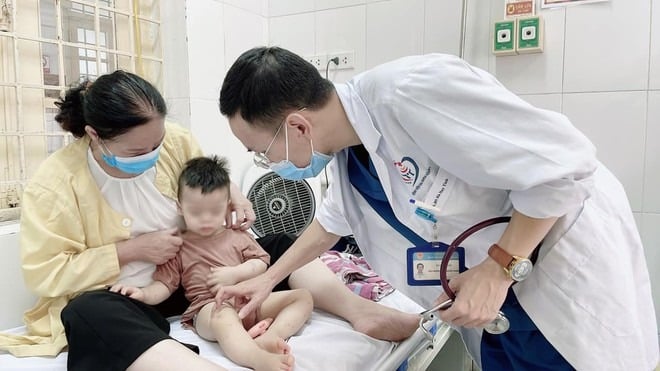 |
| Hand, foot and mouth disease patients are being treated at a medical facility. |
In addition, measles cases remain high. Specifically, last week, the Hanoi CDC recorded 114 measles cases, most of which were people who were not fully vaccinated or had not been vaccinated.
Measles can cause many serious complications, especially for children and adults with weak immune systems, so the Hanoi CDC has issued strong recommendations for full vaccination to protect public health.
Notably, last week, the Hanoi CDC also recorded 1 case of Covid-19 in Cau Giay district, bringing the total number of Covid-19 cases in the capital in 2025 to 3 cases.
Compared to the same period in 2024, the number of Covid-19 cases has decreased sharply (318 cases), showing that the epidemic situation tends to decrease, but we should not be subjective in preventing infectious diseases, especially in the context of the epidemic still having potential risks.
To cope with the winter-spring epidemic situation, Hanoi CDC requires district, county and town health centers to step up the measles vaccination campaign for children from 6 months to under 9 months old.
Along with that, Hanoi CDC also requested to strengthen communication work so that people are clearly aware of the epidemic situation and disease prevention and control measures, especially for diseases such as flu, measles and respiratory diseases.
Health experts recommend that people take proactive measures to prevent infectious diseases, including getting fully vaccinated: This is the most effective measure to protect yourself and the community from diseases such as measles, flu, and hand, foot and mouth disease.
Practice personal hygiene: Wash your hands frequently with soap and clean water, especially after contact with sick people or public objects.
Avoid contact with sick people: If you have signs of illness, you need to quickly go to a medical facility for examination and timely treatment. Improve your health: Supplement adequate nutrition, exercise, and ensure enough sleep to keep your body's resistance good.
In the context of the epidemic trending upward, the initiative and vigilance of each citizen is an important factor in helping to prevent the spread of the epidemic and protect public health.
Risks from using herbs of unknown origin
Recently, E Hospital admitted a 60-year-old female patient from Thai Binh with necrosis in both legs after soaking her feet in leaf powder of unknown origin. The patient was admitted with large blisters on both legs, severe itching, burning pain and signs of serious infection.
According to the patient, during cold weather days, she listened to an advertisement about a leaf powder that was said to help keep the body warm and improve health.
Believing in the word-of-mouth benefits, she began using the powder to soak her feet, hoping to improve her health. However, after only a few uses, her feet began to develop blisters, itching, and severe pain.
Despite her increasingly serious condition, she did not seek medical attention immediately and instead self-treated at home with unknown medicine for three days. When the blisters spread and the redness and inflammation became more severe, she went to a local medical facility. However, her condition did not improve but worsened, forcing her family to take her to E Hospital.
MSc. Nguyen Thi Kim Tien, Department of Allergy, Immunology and Dermatology, Hospital E, said the patient was admitted to the hospital with severe allergic contact dermatitis.
The skin from the mid-calf down is severely swollen, red and inflamed, with many large blisters that burst, causing fluid to leak and a high risk of secondary infection. If not treated promptly, the patient may face the risk of deep infection, even widespread necrosis.
Allergic contact dermatitis occurs when the skin comes into contact with an irritant or allergen. Some seemingly harmless leaves and herbs contain compounds that can cause severe allergic reactions. When used on sensitive or previously damaged skin, these ingredients can cause severe inflammation and lead to necrosis.
Dr. Tien emphasized that arbitrarily using leaves or leaf powder of unknown composition to soak, wash, or apply to the skin is extremely dangerous. Untested herbal products may contain chemical compounds or microorganisms that are harmful to health.
Doctors recommend that if unusual signs such as burning, blistering, or severe itching appear after contact with any herbs, stop using them immediately and go to a medical facility for timely examination.
The incident is a warning to those who believe in "miraculous" advertisements about herbal products. People need to be cautious and only use products that have been verified, have clear origins and have passed quality checks.
Arbitrary use of herbs or leaf powders of unknown origin can not only be harmful to health but can also lead to serious consequences, as in the case of the patient in Thai Binh.
In the current context, when many herbal products, functional foods and "natural" treatments are flooding the market, people need to be more vigilant and learn carefully before using. Health is a precious asset, and we need to protect it by making the right and safe choices.
Gastrointestinal bleeding due to alcohol abuse
Mr. Quan, 35 years old, fainted after a New Year's party and was taken to the emergency room. The doctor diagnosed him with duodenal ulcer and complicated gastrointestinal bleeding in multiple locations.
Mr. Quan (HCMC) was taken to the hospital by his colleagues in a state of fainting, pale skin, cold sweat, and body temperature dropping to 35.3 degrees Celsius. Initial assessment showed that he had signs of severe gastrointestinal bleeding.
The patient shared that during Tet, he often attended parties and met with partners. After a series of days of irregular eating and drinking, combined with continuous alcohol consumption, he could not control the amount of alcohol he consumed.
Specialist Doctor Cao Hoang Thien, Emergency Department, Tam Anh General Clinic, District 7, said that the patient was immediately prescribed rehydration, warming, and treatment of gastrointestinal bleeding with intravenous Nexium in an attack dose, followed by maintenance and injection of hemostatic drugs. Upon further examination of the anal and rectal areas, the doctor found that the patient's stool was black mixed with bright red stool.
"This symptom indicates that the patient is bleeding in the digestive tract. An emergency endoscopy is needed to find the bleeding point, thereby stopping the bleeding and preventing dangerous complications such as blood loss, shock, and even death," said Dr. Thien.
Immediately, the doctor performed an endoscopy on Mr. Quan. The doctors observed that there was a lot of black blood in the stomach, and the gastric antrum mucosa was congested and scratched.
In the duodenum, there was an ulcer of about 20 mm, with a large blood vessel in a state of bleeding. The doctor injected hemostatic agents and clamped 4 clips. After the procedure, the patient no longer bled and was transferred to Tam Anh General Hospital for further monitoring.
Doctor Thien said that after Tet, the clinic received many cases of gastrointestinal bleeding, mostly due to excessive alcohol consumption. Warning signs of gastrointestinal bleeding include severe epigastric pain, vomiting, black or red stools, dizziness, etc. If not detected and treated promptly, the disease can cause acute blood loss or chronic anemia.
Acute anemia can lead to multiple organ damage and organ failure, and if shock occurs, can cause irreversible damage or death.
When bleeding is detected, the patient needs to be diagnosed and treated quickly by fluid replacement, blood transfusion, medication, and hemostasis methods such as clipping, heat hemostasis, electrocautery, or injection of diluted epinephrine. Fortunately, Mr. Quan did not need a blood transfusion even though the disease had broken out a week earlier.
Doctor Ngoc recommends that if you experience symptoms such as black stools that look like coffee grounds or have a fishy smell, you should quickly go to a medical facility for examination and treatment to prevent severe gastrointestinal bleeding and dangerous complications.
How dangerous is esophageal varices?
Patient NVT (40 years old, Hung Yen) has had chronic hepatitis B for 10 years and has been treated at Medlatec General Hospital. 6 months ago, he was diagnosed with cirrhosis. Recently, he has had symptoms such as fatigue and jaundice that gradually increased and he went to Medlatec for examination.
The patient's liver function test results showed elevated indices. Abdominal ultrasound detected grade I fatty liver, dilated gallbladder, and enlarged spleen. Esophagoscopy detected grade II esophageal varices, no redness, and grade A gastroesophageal reflux - a sign of portal hypertension.
Realizing the dangerous condition with the risk of esophageal variceal rupture and gastrointestinal bleeding that could lead to death, Medlatec doctors performed endoscopic ligation of the patient's esophageal varices with rubber bands. After the treatment, the patient was stable, ate well, and was prescribed outpatient treatment before being discharged the same day.
In patients with cirrhosis, scarred liver cells can obstruct blood flow through the liver, causing increased pressure in the portal veins. As a result, the veins of the esophagus and stomach become dilated. If they become too dilated, they can rupture and cause severe bleeding.
MSc. Luu Tuan Thanh, Head of the Department of Gastroenterology at Medlatec, said that patients with ruptured esophageal veins often have symptoms such as vomiting blood, black stools, feeling dizzy, and in severe cases, loss of consciousness. Symptoms of cirrhosis include jaundice, yellow eyes, easy bruising, bleeding, etc.
Esophageal variceal rupture is a major cause of gastrointestinal bleeding and is a dangerous complication that threatens the patient's life. In this case, the doctor will provide emergency care and control the bleeding, and perform early intervention using esophageal variceal ligation technique.
Endoscopic esophageal variceal ligation is indicated when the patient has symptoms such as vomiting blood, black stools, signs of blood loss such as low blood pressure, increased heart rate, decreased hemoglobin, high-risk esophageal varices, such as large varices or red marks.
Although the esophageal variceal ligation method is quite simple, to ensure safety and effectiveness, this technique requires highly skilled doctors and proper procedures. Therefore, patients should choose reputable medical facilities with a Gastroenterology department for timely and effective treatment.
Source: https://baodautu.vn/tin-moi-y-te-ngay-182-so-ca-mac-tay-chan-mieng-va-cac-benh-truyen-nhiem-gia-tang-tai-ha-noi-d247465.html



![[Photo] Prime Minister Pham Minh Chinh receives Country Director of the World Bank Regional Office for Vietnam, Laos, Cambodia](https://vphoto.vietnam.vn/thumb/1200x675/vietnam/resource/IMAGE/2025/5/15/2c7898852fa74a67a7d39e601e287d48)

![[Photo] National Assembly Chairman Tran Thanh Man meets with Thai Prime Minister Paetongtarn Shinawatra](https://vphoto.vietnam.vn/thumb/1200x675/vietnam/resource/IMAGE/2025/5/15/e71160b1572a457395f2816d84a18b45)


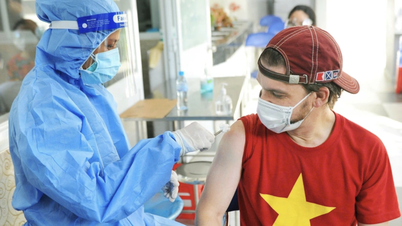

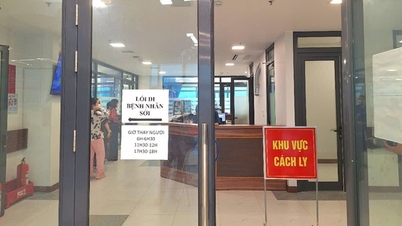







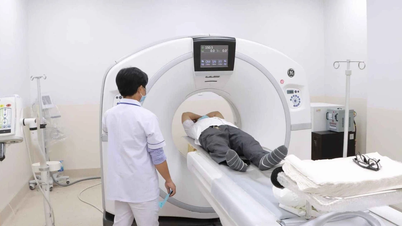




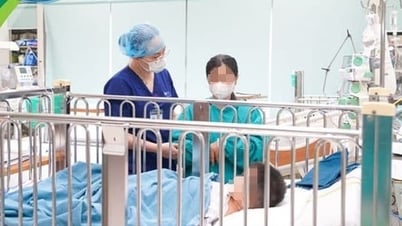

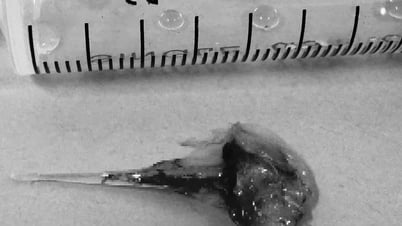




























































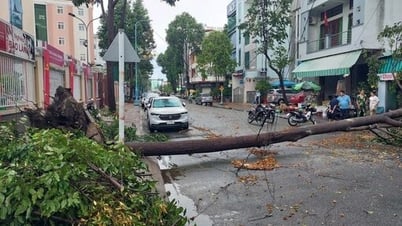








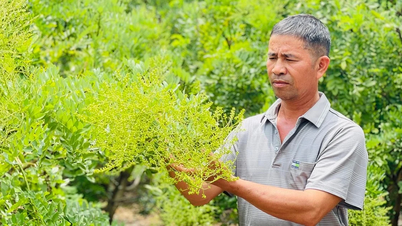

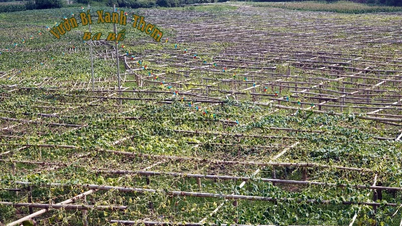




Comment (0)